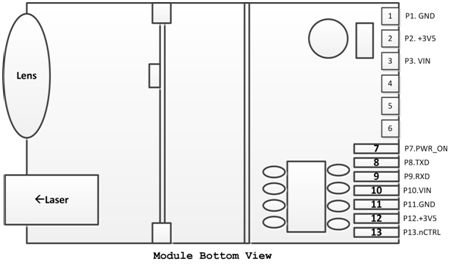Human interleukin- 1 b (IL-1 b ) ELISA kit
 ( used in serum, plasma, cell culture supernatants and other biological fluids )
principle
This experiment used double antibody sandwich ABC-ELISA. The anti-human IL-1b monoclonal antibody is coated on the microtiter plate, the IL-1b in the standard and the sample is combined with the monoclonal antibody, and the biotinylated anti-human IL-1b is added to form an immune complex attached to the plate. Horseradish peroxidase-labeled Streptavidin is combined with biotin, and the substrate working solution is blue. Finally, the stop solution sulfuric acid is added, and the OD value is measured at 450 nm. The IL-1b concentration is directly proportional to the OD value, and the standard can be drawn. The curve determines the concentration of IL-1b in the specimen.
Kit composition ( 2-8 ° C preservation)
Coated Wells | 96 holes | Enzyme Conjugate | 12ml |
10× specimen dilution (Sample Buffer) | 12ml | 20×Wash Buffer | 50ml |
Standards: 20ng/bottle | 2 bottles | Substrate working fluid (TMB Solution) | 12ml |
Primary antibody working solution (Biotinylated Antibody) | 12ml | Stop Solution | 12ml |
Prepare reagents and collect blood samples
1. Collection of specimens: serum, plasma (EDTA, citrate, heparin anticoagulation), cell culture supernatant, tissue homogenate, etc., as early as possible, stored at 2-8 ° C for 48 hours; longer time must be frozen (-20 °C or -70 °C) Save to avoid repeated freezing and thawing.
2. Standard solution preparation: Add 2 ml of distilled water before use and mix well to prepare a 10 ng/ml solution. Set the standard tube 8 tube, the first tube plus the standard dilution 900ul, the second to the eighth tube to add the sample dilution 500ul. Add 10 ng of the standard solution of 10 ng/ml to the first tube, mix and aspirate 500 ul with a pipette and transfer to the second tube. Repeat the dilution as described above, and remove 500 ul from the seventh tube and discard it. The eighth tube is a blank control.
3. The 10× specimen dilution was diluted 1:10 with distilled water (example: 1 ml concentrated dilution + 9 ml distilled water).
4. Washing solution: diluted 1:20 with distilled water (example: 1 ml concentrated washing solution added to 19 ml of distilled water)
Test procedure
1. Loading: Add 100 ul of standard or sample to be tested in each well. Mix the reaction plate thoroughly and let it stand at 37 °C for 120 minutes.
2. Wash the plate: Wash the plate thoroughly with washing solution 4-6 times, and dry it on the filter paper.
3. Add 100 ul of the first antibody working solution to each well. The reaction plate was thoroughly mixed and placed at 37 ° C for 60 minutes.
4. Wash the board: the same as before.
5. Add 100 ul of enzyme-labeled antibody working solution per well. The reaction plate was placed at 37 ° C for 30 minutes.
6. Wash the board: same as before.
7. Add 100 ul of substrate working solution per well, set 37 The reaction was carried out in the dark at °C for 15 minutes.
8. Add 100 ul of stop solution to each well and mix.
9. Measure the absorbance at 450 nm using a microplate reader within 30 minutes.
Result calculation and judgment
1. All OD values ​​should be subtracted from the blank value before calculation.
2. Take the standard products 1000, 500, 250, 125, 62, 31, 15.6, 0 PG/ml as the abscissa and OD as the ordinate. Draw on the coordinate paper and draw the standard curve.
3. Find the corresponding IL-1b content on the graph based on the sample OD value.
Kit performance
1. Sensitivity: The minimum IL-1b detection concentration is less than 8pg/ml.
2. Specificity: Recombinant or natural human IL-1b can be detected simultaneously. Does not cross-react with other human cytokines.
3. Repeatability: The coefficient of variation in both the plate and the plate is less than 11%.
Precautions
1. It is recommended to make double holes for the above standard holes and samples to be tested. The standard curve should be made at the same time for each measurement.
2. The washing process is critical. Insufficient washing will result in an accuracy error and an erroneous rise in the OD value.
3. After the slats are opened, the remaining slats should be sealed again to keep the slats dry .
4. This kit should be stored in a 4 o C refrigerator.
4. This kit is for scientific research only and cannot be used for clinical diagnosis!
Industrial Laser Distance Sensor
Industrial
Laser Distance Sensor, we also call it secondary development laser distance
module, which support TTL level and CMOS. The laser range sensor can be widely
used in professional surveying, mapping, construction, robots, hunting arrows,
industrial monitoring and automated measurement applications in electricity,
transportation, etc. Our laser distance module supports data communication with
RS232, USB with a simple adapter. The results of laser distance sensor can be
evaluated with Arduino. We are always looking ahead, hoping we can make every
measurement simple in life!

Parameters
of M703A:
|
Accuracy
|
±1
mm (0.04 inch)
|
|
Measuring
Unit
|
meter/inch/feet
|
|
Measuring
Range (without Reflection)
|
0.03-150m
|
|
Measuring
Time
|
0.1~3
seconds
|
|
Laser
Class
|
Class
II
|
|
Laser
Type
|
635nm,
<1mW
|
|
Size
|
72*40*18mm
(±1 mm)
|
|
Weight
|
About
21g
|
|
Voltage
|
DC2.0~3.3V
|
|
Electrical
Level
|
TTL/CMOS
|
|
Frequency
|
10Hz
|
|
Operating
Temperature
|
0-40 ℃ (32-104 ℉ )
|
|
Storage
Temperature
|
-25~60 ℃ (-13~140 ℉)
|
Laser Distance RS232,Arduino Distance Module,Laser Module RS232
Chengdu JRT Meter Technology Co., Ltd , https://www.cdtoflidarsensor.com
